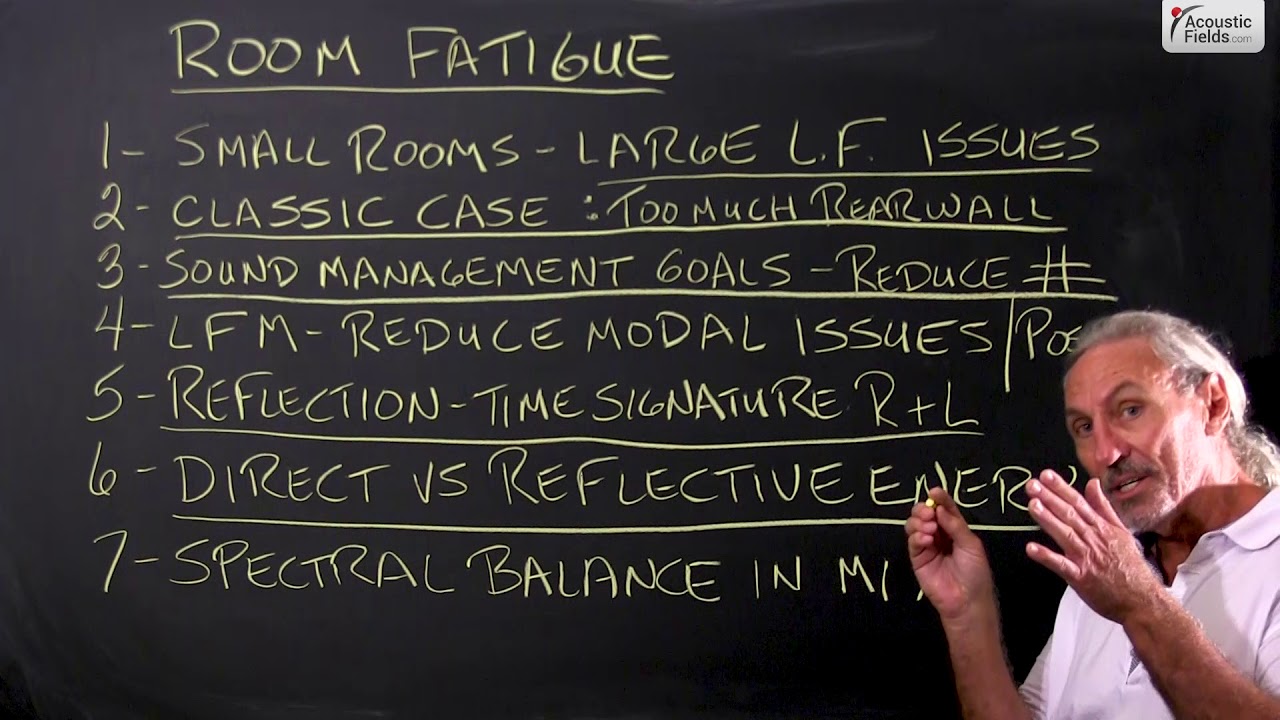Today we’re going to talk about room fatigue. In Los Angeles I get a lot of opportunity to go into a lot of studios, a lot of pretty famous people who have had major Grammy awards and hits in their life, very successful mix engineers. And a lot of them are in small rooms. And small rooms produce large low frequency issues.
Now, these guys are so good that they’ve learned to work around them. But what I’m trying to get across today in this video is that that causes fatigue, okay? And if you’re always working around problems and you’re smart enough to know those problems, that’s great because then you’ll keep them out of the mix and they won’t translate into the mix.
But for the rest of us that aren’t so sophisticated and smart, we’ve got to manage things in the room. And we do have the technologies now for low frequency management. In the past we didn’t. There weren’t products really available to solve your low frequency problems and people just honestly lived with it. So we do have this kind of technology, especially our diaphragmatic carbon technology is probably the most – I think it is the most powerful in the business right now.
I know in a classic case that in your small rooms we always have this big bass boom in the rear wall where the clients sit on the couch. There’s always a couch on the rear wall and the mix station and work station is always towards the front of the room. And when you sit on the couch you have two things, you either have too much low end or you don’t have enough. So we can move that around. We can balance that out for you.
So the goal then in our sound management process is to reduce the number of frequency issues and the strength of those issues. So that’s the goal. So we want to get them lowered so you have less to work around and we can actually change the position by treating certain areas. So we treat one area and we don’t treat another area, it will migrate. The pressure will migrate. So we have to be cognizant of that fact and use it to our advantage.
So next issue, once we get the low frequency resolved, it’s the time signature of the reflections. People use a lot of roxul, they use foams and stuff like that but you have to realize that the sound absorption requirements of music and voice are different. Don’t use building insulation for music and voice. Use a technology that was created especially for music and voice. And the rates and levels of absorption on our foam technology were just designed to do that. It took me 8 years to figure it out. You get a much smoother curve in our foams. Go on our website and look at it.
So get the modal issues resolved or reduced. Get the time signature managed on the reflections and it’s always that balance between direct and reflected energies that we’re looking at because that’s how you get that strong center image, that really tight, defined center image between the speakers. And when you get everything in balance then you get a nice mix that you can send off to be mastered.
And here’s another issue. If you reduce the fatigue in the room, when you get an idea, you can always go into the room and exercise your idea. If your room is not up to snuff and you don’t really like working in it and you get an idea “Oh, I don’t want to do that in my room because there will be too much low frequency energy. I’ll be working around it forever.” then you kind of stifle your creativity. So if you have a room that’s balanced and all these issues have been addressed, you can go into it anytime when you get an idea, okay? So less issues, more time for creativity and less fatigue.
—
This is an unedited transcript from our video series from Acoustic Fields. There will be some errors in grammar and sentence structure that occur during this translation process.
For complete understanding and comprehension, please view the video which is included in this text. For any additional information regarding this topic or others relating to room acoustics, please contact us directly at:
P: 520 – 392 – 9486







